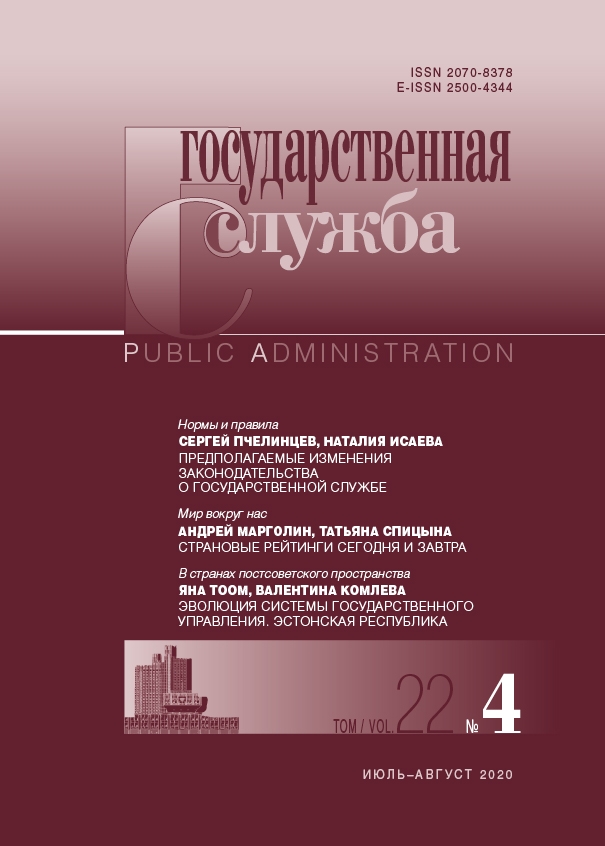Recommended link to article:
LEONID B. VARDOMSKYа
MADINA O. TURAEVAа
аInstitute of Economics of the Russian Academy of Sciences
DOI: 10.22394/2070-8378-2020-22-4-73-81
Abstract:
The article attempts to identify the types of models used in countries and to establish which of them and in which countries have been most successful. The study of economic development models used in different countries is important firstly, to identify the most successful world practices for their development and application. It is also necessary for building economic relations and expanding mutually beneficial cooperation with countries for mutual adaptation of economies. This is especially important within the framework of integration associations that require coordination of programs and strategies for the socio-economic development of the participating countries. In theoretical terms, this explains the nature of economic development or stagnation, helps understanding of how to adjust the models of national development. In our view, the economic model is the result of linking, through the appropriate institutions, the goals of national socio-economic development with the available material and intellectual resources, peculiarities of the geo-economic position, cultural traditions, on the one hand, and trends in the development of world politics and economics, national security issues on the other. Post-Soviet countries have common initial conditions for the formation of sovereign economies. The movement towards the polycentric structure of the world economy is aggravating international political and economic relations. The coronavirus pandemic has raised the profile of the quality of governance and hit the incomes of both hydrocarbon producing countries and exporters of labor and services.
Keywords:
national model, post-Soviet countries, newly independent states, resource model, pro-integration model, socially oriented model, geopolitically determined model, debt model
Received:
August 13, 2020
References:
Economic interaction of the CIS member states in the context of the Eurasian integration project. Part II. Methodological approaches to the analysis of the transformation of the post-Soviet space / Ed. by L.B. Vardomsky, A.G. Pylin. M.: Institut ekonomiki RAN, 2015. P. 176–403. In Russian
Glinkina S.P., Kulikova N.V. Towards economic patriotism: new trends in post-socialist EU member states. In: Ekonomicheskaya nauka sovremennoi Rossii. 2019. № 2 (85). P. 131–149. In Russian
Glinkina S.P., Kulikova N.V. On the model of capitalism in Central and Eastern Europe. In: Vestnik Instituta ekonomiki Rossiiskoi akademii nauk. 2018. № 3. P. 9–24. In Russian
Huntington S. Who are we? The challenges to America’s national identity. N.Y., 2004. 428 p. In English
Kleer E. Central and Eastern Europe: peripheral and imitation capitalism. In: Mir peremen. 2017. № 2. P. 25–40. In Russian
Kolodko G.V. Post-communist transition to market and democracy. Lessons from the Polish experience. In: Mir peremen. 2019. № 3. P. 8–25. In Russian
Nekipelov A.D. Globalization and the development strategy for the Russian economy. In: Problemy prognozirovaniya. 2001. № 4. P. 1–16. In Russian
New independent states: comparative results of socio-economic development. Scientific reports of IE RAS / Ed. by L.B. Vardomsky. M.: Institut ekonomiki RAN, 2012. 60 p. In Russian
Post-socialist world: results of transformation. In 3 vol. / Ed. by S.P. Glinkina. Vol. 2. Post-Soviet states. St. Petersburg: Aletejya, 2017. 454 p. In Russian
Pylin A. Problems and prospects for modernizing Georgia’s economy in the context of Euro-Atlantic integration. In: Obshchestvo i ekonomika. 2018. № 5. P. 79–96. In Russian
Shurubovich A.V. Belarus in the EAEU: trends, problems, prospects. In: Rossiya i sovremennyi mir. 2019. № 4 (105). P. 91–110. In Russian
Socio-economic transformation in the CIS countries: achievements and problems (materials of the international conference). Institute of the Transition Period, Academy of National Economy under the Government of the Russian Federation. M.: Izd. Instituta perekhodnogo perioda, 2004. 622 p. In Russian
Social market economy: concept, practical experience and application prospects in Russia / Ed. by R.M. Nureeva. M.: Izdatel’skii dom GU-VShE, 2007. 325 p. In Russian
Turaeva M.O. National economic system of the Republic of Tajikistan in the economic space of Central Asia (mechanisms of regulation and development priorities). Dr. Sci. (Economics) Diss. / Rossiiskii ekonomicheskii universitet im. G.V. Plekhanova. M., 2012. 319 p. In Russian
Turaeva M.O., Vardomsky L.B. Eurasian integration as a reflection of the national characteristics of the economic development of the participating countries. In: Vestnik Tadzhikskogo natsional’nogo universiteta. Seriya social’no-ekonomicheskikh i obshchestvennykh nauk. 2019. № 9. P. 12–22. In Russian
Vardomsky L.B. Transformation of the post-Soviet space in the context of its changing meaning. Ekonomicheskoe vzaimodejstvie stran-chlenov SNG v kontekste evraziiskogo integratsionnogo protsessa / Ed. by L.B. Vardomsky, A.G. Pylin. M.: Institut ekonomiki RAN, 2015. P. 178–194. In Russian
Yusuf Sh. Development economics through the decades. A critical look at 30 years of the World Development Report. M.: Ves’ mir, 2012. P. 240 p. In Russian
Articles in Open Access mode are published under the Creative Commons Attribution 4.0 International (CC BY) license.

